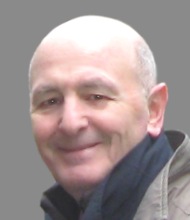Acupuncture Research
The grass is always greener: a critical look at the lessons and challenges of acupuncture education in America. PMID: 40330785.
Recent approaches on signal transduction and transmission in acupuncture: a biophysical overview for medical sciences. PMID: 31765838.
Anatomical Evidence of Acupuncture Meridians in the Human Extracellular Matrix: Results from a Macroscopic and Microscopic Interdisciplinary Multicentre Study on Human Corpses. PMID: 31015853.
Neuroembryology of the Acupuncture Principal Meridians: Part 3. The Head and Neck. PMID: 29682148.
Peripheral Sensory Nerve Tissue but Not Connective Tissue Is Involved in the Action of Acupuncture. PMID: 30872987.
Is the newly described interstitial network the anatomical basis of acupuncture meridians? PMID: 30874366.
American Academy of Medical Acupuncture.
The Society for Acupuncture Research. The society's mission is to promote, advance and disseminate scientific inquiry into Oriental medicine systems, which include acupuncture, herbal therapy and other modalities through quantitative and qualitative research addressing clinical efficacy, physiological mechanisms, patterns of use and theoretical foundations.
The State of 21st Century Acupuncture in the United States. PMCID: PMC11472758.
Unanticipated Insights into Biomedicine from the Study of Acupuncture. PMID: 26745452.
Acupuncture for Chronic Low Back Pain: Recommendations to Medicare/Medicaid from the Society for Acupuncture Research (SAR). PMID: 30925124.
Acupuncture for chronic pain. PMID: 24595780.
Default Mode Network as a Neural Substrate of Acupuncture: Evidence, Challenges and Strategy. PMID: 30804749.



